 When you talk to your friends and co-workers who have made the transition from a military cockpit to an airline flight deck, there is one phrase that is sure to come up in conversation – that phrase is “quality of life” (QOL). In last month’s article, I began a discussion of what QOL means to me. I have come up with five factors that really nail QOL in my mind: time off, schedule flexibility, location, job satisfaction, and pay/benefits. In Part 1, we discussed the first two factors, time off and schedule flexibility. This month, we will discuss the remaining factors and compare military pilot QOL with airline pilot QOL.
When you talk to your friends and co-workers who have made the transition from a military cockpit to an airline flight deck, there is one phrase that is sure to come up in conversation – that phrase is “quality of life” (QOL). In last month’s article, I began a discussion of what QOL means to me. I have come up with five factors that really nail QOL in my mind: time off, schedule flexibility, location, job satisfaction, and pay/benefits. In Part 1, we discussed the first two factors, time off and schedule flexibility. This month, we will discuss the remaining factors and compare military pilot QOL with airline pilot QOL.
Keep in mind that there is no “one size fits all” when it comes to discussing QOL. The information presented here is my opinion based in my situation. You may have particular factors that are important to you and your family, and your airline situation may be vastly different from mine. That’s one of the things I love about the airline industry; for the most part, you are free to define your QOL based on the decisions you make (e.g. airline, domicile, aircraft type, location, etc.). For those of you still trying to rack and stack your airline dream sheet to decide which airline is the best fit for you, the Cockpit to Cockpit Support Package, available at www.cockpit2cockpit.com, includes a unique airline comparison spreadsheet that allows you to derive a rank-ordered list of airline choices weighted toward the factors you consider most important.
Location
Imagine the freedom to choose to live in any city in the country (or even overseas). The airline industry affords you that freedom. Due to the nature of military service, you’re tied to living within reasonable driving distance of your duty location, and you usually don’t have much say as to where you’ll be assigned. There’s also a huge lack of stability because, on average, you PCS (Permanent Change of Station), i.e. move, every three years. I had eight PCS moves in my twenty-year Air Force career, and I feel like my number is relatively low compared to the average.
I have read various sources reporting that somewhere between 50% to as high as 80% of airline employees commute to work (i.e. they don’t live within driving distance of the city where they are domiciled with their airline and have to fly space-available to get to work). In Part 1 of this article we discussed how being a commuter may detract from your QOL. However, the freedom to choose where you live can also add a lot to your QOL dependent upon your reasons for choosing to commute. Maybe you want or need to live close to your extended family, or maybe you want to live as far away as possible from your in-laws. Many former military pilots choose to stay in their last duty location to finally provide some stability for their kids to finish school and graduate with their friends. I know several pilots who chose a city just because they like the lifestyle choices associated with the area (e.g. outdoor opportunities, cost of living, lack of traffic, etc.). The great thing is, it’s a choice.
Many pilots separate from active duty to start their airline career while continuing to serve with the Guard/Reserve component. If you decide to go this route, you’ll want to make your logistical situation as simple as possible. The best possible solution is to get hired at a Guard/Reserve unit where you live and also be able to drive to your airline domicile. The next best choice is to live within driving distance of either your airline domicile or your military unit (choosing the job at which you will likely spend the most time) having to commute to the other. The worst possible situation is the double-commute – living in a different place and having to commute to both jobs. Avoid that situation if you can help it. Double commutes are tough, but sometimes we do what we have to do for family or for professional reasons.
Another thing to factor into your location decision that most pilots don’t think about; living in domicile provides the opportunity to make some extra money. Because every airline and aircraft type is different, I will simply use my situation as an example. My airline provides a lot of opportunity to pick up extra flying (called “open-time”) at either straight pay (the amount I normally get paid per hour) or premium pay (1.5X). Most airlines have a similar system. Normal open-time is awarded to bidders based on pilot seniority number, but Short Notice Open Time (affectionately referred to as SNOT) is awarded to bidders on a first-come, first-served basis. I am relatively junior at my airline, however because I live so close to my domicile, I have been able to pick up, on average, an extra 15-20 block hours of credit each month. That usually equates to working an extra 2-3 days per month. I usually try to pick single-day “turns” so I’m back sleeping in my own bed each night. I work an average of sixteen days a month including the extra 2-3 days of open time.
Most pilots who don’t live in domicile usually don’t have the desire to pick up open-time because of their commute situation. If they only get two or three full days at home between trips it becomes less desirable to pick up any extra days at work. Additionally, they don’t live close enough to take advantage of SNOT. I estimate that I make an extra 20-30% more per year due to living in domicile.
 Job Satisfaction
Job Satisfaction
When you talk to airline pilots about their job, the conversation often revolves around pay, 401K benefits, and profit sharing, but there is far more to QOL than money. You can make all the money in the world, but if your QOL suffers it won’t matter how much you make. That’s why I recommend that all pilots take a hard look at why they want to be an airline pilot before choosing to leave the military.
In the realm of personal job-satisfaction, you should consider how very different being an airline pilot is from being a military pilot. Airline flying is never going to compare with military flying from the perspective of mission. It’s hard to replace the sense of pride that comes with putting bombs on target, delivering critical war-fighting materials to the fight, gathering intelligence to help the battle-space commanders make the right decisions, providing air superiority, or air-refueling the aircraft that make all those missions (and others) possible. Therefore, I give the edge to military (by a long shot) when it comes to the pure flying comparison of military vs. airlines.
Although your airline mission may not be as critical as those military missions, it’s still very important to your passengers, so changing your paradigm may help you find increased job satisfaction as an airline pilot. It may be just another day at the office for you, but each flight has importance to those paying passengers in the back. Some of them are on their way to an important job interview, a business meeting, a family reunion, a funeral, a wedding, a family vacation, or trying to get to a loved one’s bedside before they pass away. I’ve flown many Make-A-Wish Foundation’s terminally ill children to Disney World to have their wishes fulfilled. I take pride in connecting people to all the things that are important in their lives and this provides my job satisfaction.
You may also miss the squadron camaraderie and built-in social network of the military. That gets left behind when you take off the flight suit and go to the airlines. There are no roll calls, naming ceremonies, First Fridays, etc. The best you can hope for is a lively push to the hotel bar at the end of the day by the dozen or so crews that are staying at that hotel on any given night. The company hosts a couple of functions a year for employees and families, but it’s not the same.
The great flying, patriotic missions, and built-in social network of military life come with a price with which we military pilots are all too familiar: deployments, long hours, additional duties, and a seemingly never-ending supply of queep (defined as any additional duty that pulls you away from the flying mission). As I think back on my Air Force career, hour to hour was about a 1:12 ratio as a conservative estimate. For every hour I spent flying, I spent about twelve hours doing all sorts of non-flying work. While some of that work was important and directly related to accomplishing the mission, the sad fact is, a lot of it wasn’t.
As an airline pilot, when I land and shut down the engines at the end of the day, there is no email to check, no performance reports to write, no computer-based annual training requirement squares to fill. You get the point. I just go to work and get paid to fly people from point A to point B. In my opinion, the lack of queep and being paid to just be a professional pilot is where airline job satisfaction blows military job satisfaction out of the water. I will even go one step further and say, excessive queep is likely one of the main reasons pilots leave the military for the airlines.
Another contributor to job satisfaction as an airline pilot involves the type of flying you desire. Do you want to haul cargo or passengers? Do you want to fly mostly narrow-body domestic and near-international, or wide-body long haul international? Each of these options comes with its own pros and cons. In general, if you choose cargo, you will fly either wide-body long haul international or domestic on the back-side of the clock. Both can be tough on the body. If you choose passenger wide-body, you will stay junior for much longer which equals more time on reserve with a longer time to upgrade. The reverse can be said for domestic narrow body. Your seniority will grow faster and your time to the left seat will be less. These are all choices that will define your job-satisfaction and overall QOL, so I encourage you to do you homework by interviewing people from each community before you make your choice.
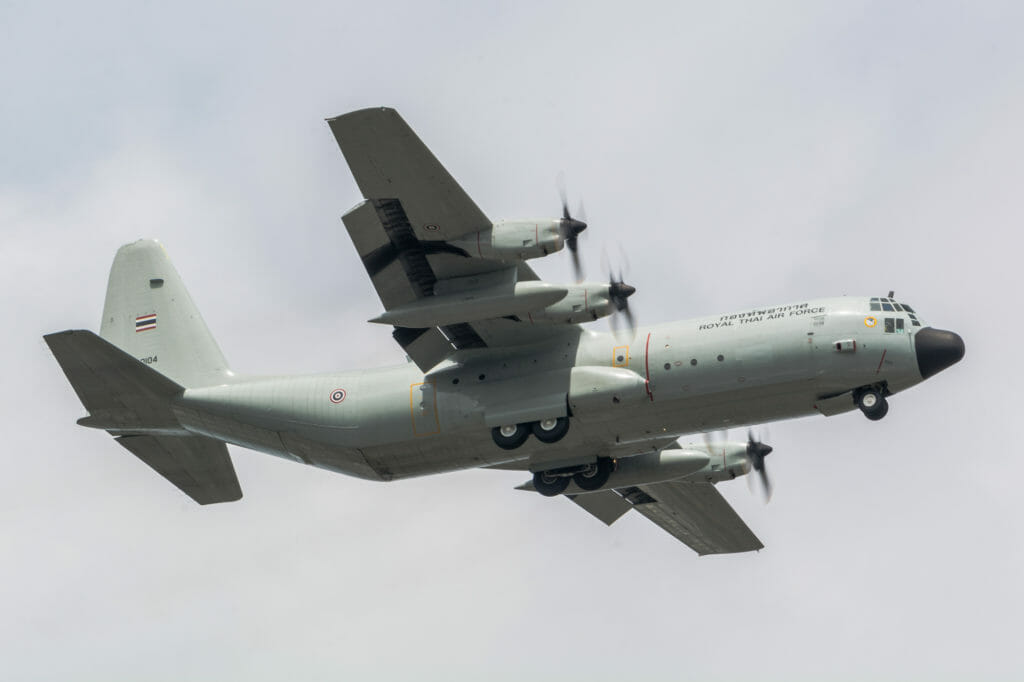 Pay and Benefits
Pay and Benefits
This is a topic that could truly be it’s own book, and who knows, maybe someday I will write that book. However, for the purposes of this article I’m going to look at it from the FL300 perspective because there are too many variables to consider when it comes to pay and benefits. The military pay and benefits are quite different from the airlines, therefore they are difficult to compare – apples to apples. While total compensation (pay and benefits) is an important part of QOL, I always encourage pilots to look beyond the pay scales and look at the complete QOL picture when rank ordering their airline choices. My discussion in this section will focus on active duty pilots who either retire or separate with no Guard/Reserve commitment. Continuing to serve part-time alters the discussion because you would be blending pay/benefits of both the military and airline systems, therefore it won’t be considered here.
When comparing straight pay, you should be prepared to take a slight hit in annual pay for your first year with the airlines, and possibly for several years, depending upon your rank/longevity at the point you separate, the airline you work for, and the airframe you choose (or get stuck with). However, even when you add in military flight pay, aviation retention bonuses, and other special military pay (housing allowance, food allowance, etc.), you will quickly outpace your military pay after a few years with the airlines. This is especially true if you choose an airline with quick captain upgrades. Look at any airline pay scale on www.airlinepilotcentral.com and you will quickly see that captains make the big bucks. Due to the large number of retirements facing the legacy airlines and the current hiring wave, many pilots are finding themselves eligible to upgrade to captain in about 1-2 years in the smaller, older, single-aisle airframes (MD-88, B-717, E-190, etc.) at the legacy carriers. A good rule of thumb when looking at airline pay scales is to multiply the hourly block rate x 1000 to determine annual salary. To give you an idea of what I’m talking about, I retired as an O-5 in 2014. In my second year with the airline, I surpassed the annual salary I was making as an O-5 in the Air Force.
With respect to retirement benefits, a full military retirement is hard to beat. The check-of-the-month club plus full medical benefits is pretty awesome. On paper, you can make more money by getting out of the military at the earliest opportunity and starting an airline pilot career, but in my opinion the big-picture difference in money is negligible and shouldn’t be your deciding factor. I’m not educated enough to speak to the new Blended Retirement System (BRS) that some military pilots will be eligible for starting in 2018, but I can speak to the traditional 20-year military active-duty retirement. If you separate early and go traditional Guard/Reserve, you will still be able to join the check-of-the-month club, but you won’t see the first check until age 62. From a QOL perspective, the biggest difference between military and airline retirement systems is not “how much” but “how secure.” Once you have earned military retirement benefits, they continue for life. That’s not the case with retirement from an airline.
That said, the airline retirement benefits are nothing to sneeze at either. Most major airlines offer a 401K plan with direct contributions between 14-16% of eligible earnings depending on the airline. That means the company contributes 14-16% of your monthly earnings to your 401K without you having to lift a finger. In most cases, pilots can also contribute up to 50% of each paycheck into their 401K in addition to the company’s direct contribution (up to the maximum annual limit set by the IRS). Many airlines also have profit sharing plans. Some airlines pay profit sharing as a bonus check to pilots, and other airlines add it as a contribution to the 401K plan. These profit sharing contributions in the past couple years have been equivalent to two to three months’ pay for the average pilot and are based on how much you fly. So the more you fly, the larger the profit sharing check. However, there is no guarantee that a company will remain profitable every year – no profit = no profit sharing.
As mentioned earlier, from a QOL perspective, the biggest difference between military and airline retirement benefits is about income security. In the military, as long as you earn retirement eligibility, you will have those benefits every month for life, but they don’t kick-in until you’re retired (or age 62 for traditional Guard/Reserves). In the airlines, your benefits are received every month that you are actively flying, starting from day-one, but they cease after you retire or if you lose your job. The good news is, the 401K goes with you for whatever reason when you leave, but at that point, you’re no longer earning any new benefits (i.e. 401K and profit sharing contributions). Additionally, some airline profit sharing plans are tied to the company’s success. In other words, if the company declares bankruptcy, creditors can lay claim to your profit sharing accounts in the settlement. I don’t think I need to tell you the “roller coaster” history of the airline industry for you to realize that although times are good right now, history shows that the good times don’t tend to last forever in this industry.
Therefore, I find that the “guarantee factor” of a military retirement provides a better QOL component than an airline retirement despite the airline retirement having the potential to grow a bigger nest egg. Then again, I’m a conservative investor and everyone’s circumstances are different. You may come to a different conclusion. As I said earlier, the beautiful thing about the airline industry is that you get to define what QOL means to you. Also, it doesn’t have to be a choice of either/or – you can choose both!
Medical benefits are something else to be considered with respect to QOL. This can be especially important if you or a family member experiences a serious medical condition like cancer, disease, or injury. As a retired military pilot who still uses retiree health care benefits, I think it boils down to this; military health care is generally less expensive but you get what you pay for. In other words, if you want free health care then you need to live near a military facility and accept that you and your family are not their highest priority anymore (we were very spoiled by having access to the flight medicine clinic on active duty). If you’re willing to make co-pays, you can use civilian health care, but in my experience, the good doctors and facilities that accept TRICARE are few and far between.
On the civilian side, most major airlines offer comprehensive plans from well established and widely accepted insurance companies. The premiums will give you a little sticker-shock initially, especially on first-year pay, but after a few years you probably won’t even feel them. If you’re retired military, you have the option to stay with TRICARE rather than choose the airline plan or do a blend of the two by adding airline dental and vision plans on top of your military-provided health care.
Probably your biggest threat to financial security as an airline pilot is losing your FAA Class I medical on either a short term or long term basis. For that reason, I highly recommend you research and take advantage of the Loss of License (LOL), Short Term Disability (STD), and Long Term Disability (LTD) plans offered by your airline and/or union. Hopefully you’ll never need them, but should something happen, the peace of mind knowing you’re covered, is well worth the premiums you’ll pay.
Summary
There are a lot of pros and cons to both a military and an airline aviation career. I feel blessed to have served my country as an Air Force officer and pilot and I would never want to change the path I chose. I think every military officer and most military members in general, understand that serving our great nation in uniform involves sacrifice. Unfortunately, in many circumstances one thing that is sacrificed is quality of life. That just goes hand-in-hand with the unique nature of military service.
A second flying career as an airline pilot provides an opportunity to reclaim a large part of the quality of life sacrificed during your time in uniform. Continued service as a traditional Guard/Reserve pilot allows you to live the best of both worlds, although you may lose some QOL in the short term to maximize your long term QOL. The airline industry is also unique in that it offers choices, and those choices essentially allow you to define your own QOL. In this two-part article, I’ve defined what QOL means to me and given you examples of my QOL. I encourage you to perform your own QOL assessment and carefully consider the factors that are most important to you. Your QOL assessment should help guide your decisions when choosing if/when to make an airline transition, your preferred airline choice, an airframe type, where to live, and many other decisions that will impact your QOL. Also, don’t forget that for the most part, these are not static choices. If you find that a choice was not the best or that circumstances are altered, then you can make a change to make it right. You’ll have that freedom as an airline pilot and if you choose to exercise it, you and your family should have a phenomenal quality of life!












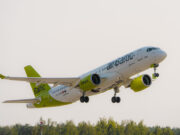
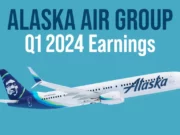


























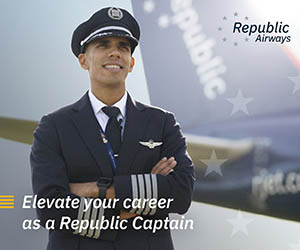



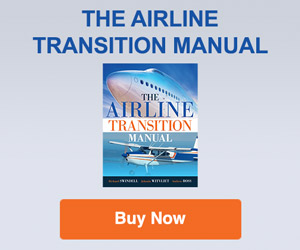

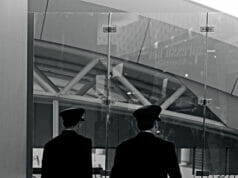



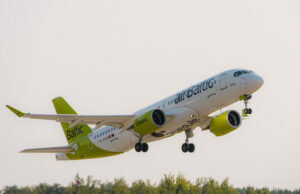



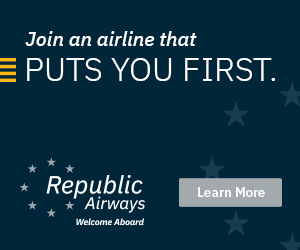

[…] times normal rate. The extra flying option is referred to as open time. Open time extra pay can be substantial for pilots that make it a […]
Thanks for sharing this! All the best!